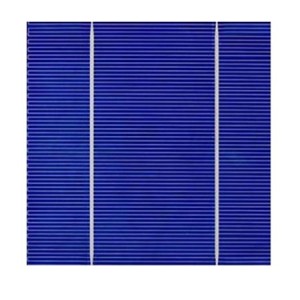Polycrystalline Silicon Cells: production and characteristics
Polycrystalline silicon is a multicrystalline form of silicon with high purity and used to make solar photovoltaic cells.
How are polycrystalline silicon cells produced?
Polycrystalline sillicon (also called: polysilicon, poly crystal, poly-Si or also: multi-Si, mc-Si) are manufactured from cast square ingots, produced by cooling and solidifying molten silicon. The liquid silicon is poured into blocks which are cut into thin plates. The solidification of the material results into cells that contain many crystals, making the surface of the poly-Si/ mc-Si cell less perfect than its mono-Si counterpart. Due to these defects, polycrystalline cells absorb less solar energy, produce consequently less electricity and are thus less efficient than monocrystalline silicon (mono-Si) cells. Due to their slightly lower efficiency, poly-Si/ mc-Si cells are conventionally a bit larger, resulting in comparably larger PV modules, too. This factor has to be considered if space is limited. Nevertheless, the advantage of poly-Si/ mc-Si cells is that they are easier and thus cheaper to produce.
 Polycrystalline solar cell
Polycrystalline solar cellCharacteristics of poly-Si/ multi-Si cells
The standard size of poly-Si/ multi-Si cells is 6 inch (=15.24 cm). As compared to mono-Si cells, they have a grainy blueish coating appearance which is a result of the imperfect crystal structure of the cell. On average, the conversion efficiency of poly-Si/ mc-Si cells is between 14% and 16% with lab-records at currently over 21%.

Dennis S
on 08 Oct 2020